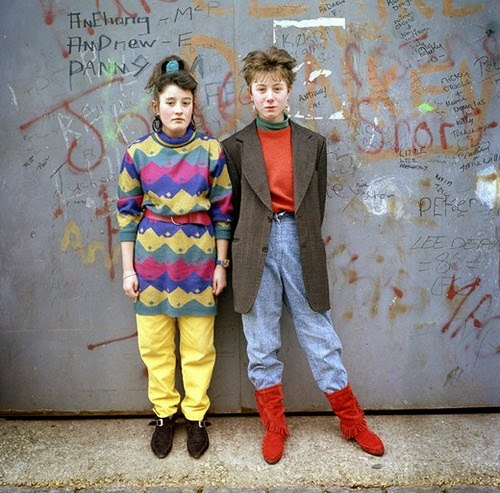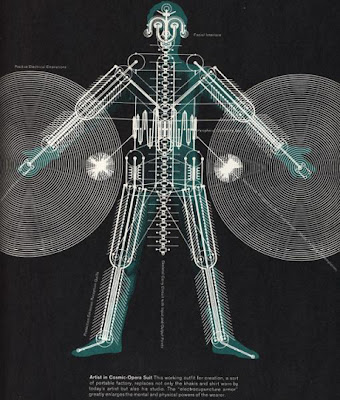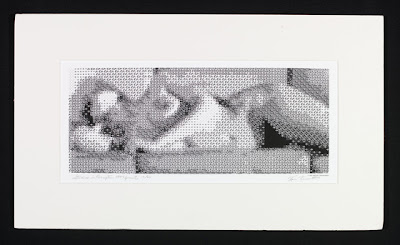Death
is inherently universal - everything that has, does and will exist is not
exempted from its fatal grip; and although we are, of course, idiosyncratic
beings, incessantly subjected to the likes of cultural stereotypes that
detrimentally divide us apart, and media content that adversely illuminates our
social and physical differences, death essentially unites us all. The universal
relatability of death is arguably what has rendered Rankin’s Alive in the Face of Death, exhibiting as
part of LOOK/13 festival, a huge success. As I, myself wandered throughout the
exhibition I encountered a preponderance of people who appeared to be
responding positively. Many gave considerable time and attention to the works
and proved deeply touched by the various stories told by those who have either
experienced a close brush with death, live with terminal illness or work within
the death industry.
Arguably the most thriving attribute of Rankin’s work is that he allows his sitters to determine how they are portrayed. Each photograph is assigned with a personal touch or enhanced with an element, which denotes the sitter’s personal interests or individual character. Revealing a bit about the sitters’ personalities renders the exhibition less despondent and somber - qualities one would normally expect from an exhibition centered on death. Instead, consequential to the aforementioned feature, the photographs are assigned with a pleasantly surprising degree of optimism, as well as a celebratory feel. Despite the personalised nature of each photograph, Rankin’s signature style is not expelled. Each photograph is consistently embellished with his clean, striking aesthetic; therefore, he has effectively managed to strike a balance between his own presence, through aesthetic and style, with that of his sitters. In spite of the cutting edge, contemporary feel of Rankin’s collection many art historical references are made throughout and this, in effect, helps to dismiss any preconceptions that it is merely style-over-substance - that which many may sadly expect from one renowned for fashion photography. Amongst the serious subject matter of the exhibition and fascinating stories told by Rankin’s sitters, art historical references make it evident that the collection possesses true artistic credibility. Dali and Halsman’s In Voluptas Mors is distinctively referenced, as well as ‘Vanitas’, a genre of 17th century still-life painting. Similarly, one cannot help but be reminded of Damien Hirst’s famous For the Love of God when they encounter the series of skull mask photographs exhibited in the entrance area. Such references as these relate particularly well to a gallery like the Walker in which much traditional, historical art resides.
In a curatorial sense, the clean, stark style of Rankin’s work is well complimented by the exhibition space, which clearly adheres to the White Cube aesthetic – it is white, spacious and minimalistic. The white wall gallery system is not only, in a superficial sense, an effective visual facet, it also, on a more profound level, helps to fabricate an environment suitable for deep, philosophical contemplation – that which the stories told by Rankin’s sitters should incessantly inspire in viewers. Fundamentally, the photographs and stories are vibrant enough on their own; therefore, the exhibition space is appropriately understated. The story telling aspect of the exhibition is feasibly what makes it so engaging. The stories, which are told through extended captions, essentially animate the photographs and become integral to the viewer’s experience. I was particularly blown away by Andrew Douglas’ account. In October 2001, at the tender age of twenty-one, Douglas was stabbed twice and left to die in his friend’s home. Subsequent to undergoing eight-hour surgery and technically dying four times, Douglas’ labours to stay alive paid off. Whilst one would expect to be reminded of the fragility of life from an exhibition such as this, on the contrary, it is stories like Douglas’ that providentially evoke viewers to realise their inner power and resilience, as well as the body’s inherent instinct to survive, as opposed to its inevitability to deteriorate.
I left the Walker with what was, for me, the most striking image that I had encountered in the exhibition vividly etched into my mind. This was the beautiful photograph of Sandra Barber, a forty-eight year old mother who was sadly diagnosed with breast cancer eight years ago. Adorned with garish neckwear and striking makeup she displays her ‘inner warrior’, as she is everyday battling her life-threatening condition. She looks utterly striking against the inky background that effectively embodies the constant threat of death looming in the foreground of her life. Her eyes are vivacious and full of fire – they peer from behind, distinct, heavy black makeup like a passionate light of vitality in a deathly void. Although the exhibition detrimentally reminds us of our fragility and inevitable inclination to pass away, Rankin’s sitters display a degree of optimism and enthusiasm for life that is truly inspiring. It is somewhat serendipitous that their experiences have rendered them more appreciative of being alive and have blessed them, if you will, with an inherent gratefulness for every second, minute and hour that they attain here on earth.
Life may be transient, but Rankin’s sitters and their inspiring stories are forever eternalised in this evocative collection of work. Alive in the face of death is a must see, and an unequivocal highlight of the LOOK/13 festival.
Arguably the most thriving attribute of Rankin’s work is that he allows his sitters to determine how they are portrayed. Each photograph is assigned with a personal touch or enhanced with an element, which denotes the sitter’s personal interests or individual character. Revealing a bit about the sitters’ personalities renders the exhibition less despondent and somber - qualities one would normally expect from an exhibition centered on death. Instead, consequential to the aforementioned feature, the photographs are assigned with a pleasantly surprising degree of optimism, as well as a celebratory feel. Despite the personalised nature of each photograph, Rankin’s signature style is not expelled. Each photograph is consistently embellished with his clean, striking aesthetic; therefore, he has effectively managed to strike a balance between his own presence, through aesthetic and style, with that of his sitters. In spite of the cutting edge, contemporary feel of Rankin’s collection many art historical references are made throughout and this, in effect, helps to dismiss any preconceptions that it is merely style-over-substance - that which many may sadly expect from one renowned for fashion photography. Amongst the serious subject matter of the exhibition and fascinating stories told by Rankin’s sitters, art historical references make it evident that the collection possesses true artistic credibility. Dali and Halsman’s In Voluptas Mors is distinctively referenced, as well as ‘Vanitas’, a genre of 17th century still-life painting. Similarly, one cannot help but be reminded of Damien Hirst’s famous For the Love of God when they encounter the series of skull mask photographs exhibited in the entrance area. Such references as these relate particularly well to a gallery like the Walker in which much traditional, historical art resides.
In a curatorial sense, the clean, stark style of Rankin’s work is well complimented by the exhibition space, which clearly adheres to the White Cube aesthetic – it is white, spacious and minimalistic. The white wall gallery system is not only, in a superficial sense, an effective visual facet, it also, on a more profound level, helps to fabricate an environment suitable for deep, philosophical contemplation – that which the stories told by Rankin’s sitters should incessantly inspire in viewers. Fundamentally, the photographs and stories are vibrant enough on their own; therefore, the exhibition space is appropriately understated. The story telling aspect of the exhibition is feasibly what makes it so engaging. The stories, which are told through extended captions, essentially animate the photographs and become integral to the viewer’s experience. I was particularly blown away by Andrew Douglas’ account. In October 2001, at the tender age of twenty-one, Douglas was stabbed twice and left to die in his friend’s home. Subsequent to undergoing eight-hour surgery and technically dying four times, Douglas’ labours to stay alive paid off. Whilst one would expect to be reminded of the fragility of life from an exhibition such as this, on the contrary, it is stories like Douglas’ that providentially evoke viewers to realise their inner power and resilience, as well as the body’s inherent instinct to survive, as opposed to its inevitability to deteriorate.
I left the Walker with what was, for me, the most striking image that I had encountered in the exhibition vividly etched into my mind. This was the beautiful photograph of Sandra Barber, a forty-eight year old mother who was sadly diagnosed with breast cancer eight years ago. Adorned with garish neckwear and striking makeup she displays her ‘inner warrior’, as she is everyday battling her life-threatening condition. She looks utterly striking against the inky background that effectively embodies the constant threat of death looming in the foreground of her life. Her eyes are vivacious and full of fire – they peer from behind, distinct, heavy black makeup like a passionate light of vitality in a deathly void. Although the exhibition detrimentally reminds us of our fragility and inevitable inclination to pass away, Rankin’s sitters display a degree of optimism and enthusiasm for life that is truly inspiring. It is somewhat serendipitous that their experiences have rendered them more appreciative of being alive and have blessed them, if you will, with an inherent gratefulness for every second, minute and hour that they attain here on earth.
Life may be transient, but Rankin’s sitters and their inspiring stories are forever eternalised in this evocative collection of work. Alive in the face of death is a must see, and an unequivocal highlight of the LOOK/13 festival.



